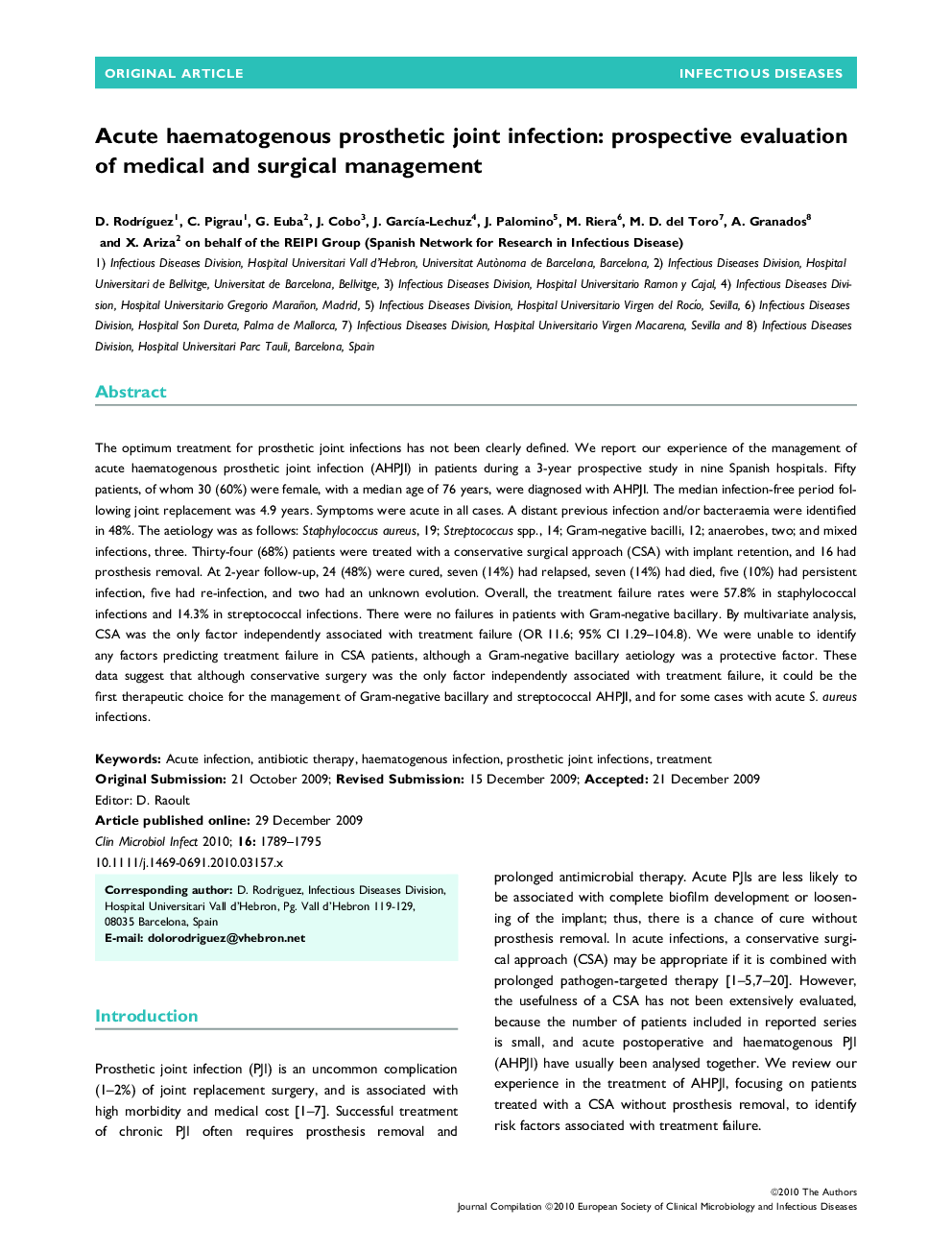| Article ID | Journal | Published Year | Pages | File Type |
|---|---|---|---|---|
| 3397382 | Clinical Microbiology and Infection | 2010 | 7 Pages |
The optimum treatment for prosthetic joint infections has not been clearly defined. We report our experience of the management of acute haematogenous prosthetic joint infection (AHPJI) in patients during a 3-year prospective study in nine Spanish hospitals. Fifty patients, of whom 30 (60%) were female, with a median age of 76 years, were diagnosed with AHPJI. The median infection-free period following joint replacement was 4.9 years. Symptoms were acute in all cases. A distant previous infection and/or bacteraemia were identified in 48%. The aetiology was as follows: Staphylococcus aureus, 19; Streptococcus spp., 14; Gram-negative bacilli, 12; anaerobes, two; and mixed infections, three. Thirty-four (68%) patients were treated with a conservative surgical approach (CSA) with implant retention, and 16 had prosthesis removal. At 2-year follow-up, 24 (48%) were cured, seven (14%) had relapsed, seven (14%) had died, five (10%) had persistent infection, five had re-infection, and two had an unknown evolution. Overall, the treatment failure rates were 57.8% in staphylococcal infections and 14.3% in streptococcal infections. There were no failures in patients with Gram-negative bacillary. By multivariate analysis, CSA was the only factor independently associated with treatment failure (OR 11.6; 95% CI 1.29–104.8). We were unable to identify any factors predicting treatment failure in CSA patients, although a Gram-negative bacillary aetiology was a protective factor. These data suggest that although conservative surgery was the only factor independently associated with treatment failure, it could be the first therapeutic choice for the management of Gram-negative bacillary and streptococcal AHPJI, and for some cases with acute S. aureus infections.
